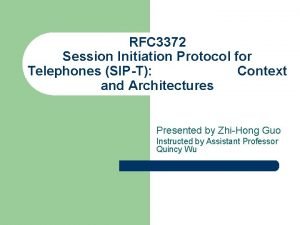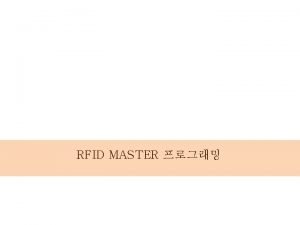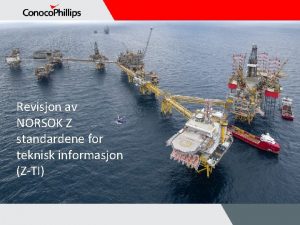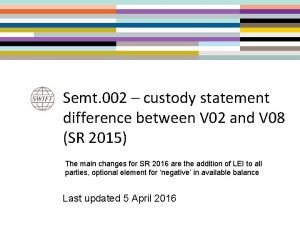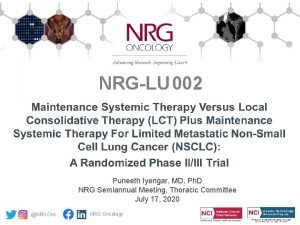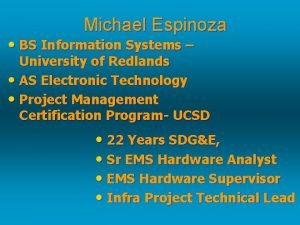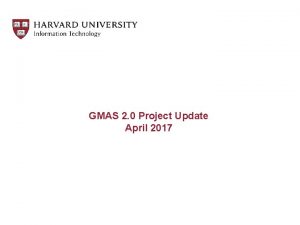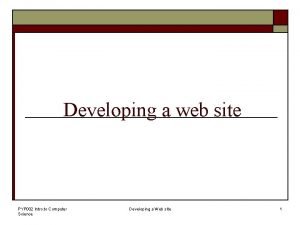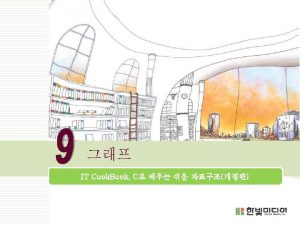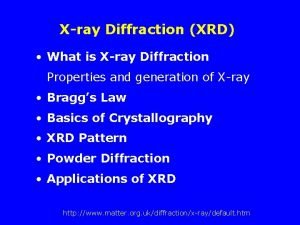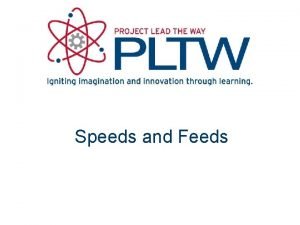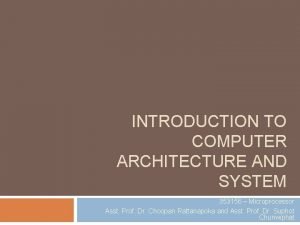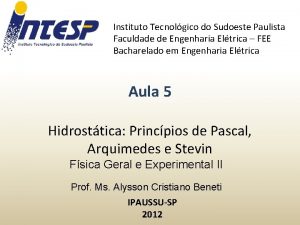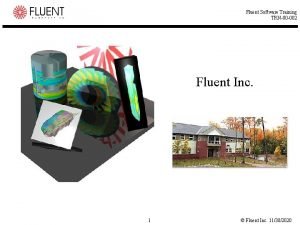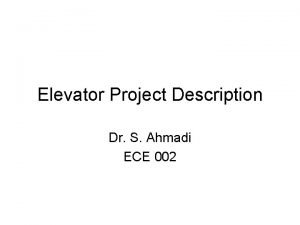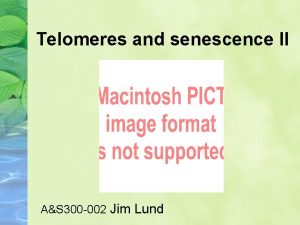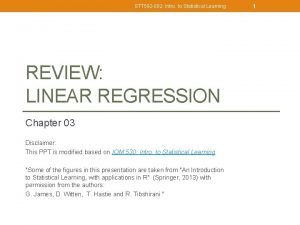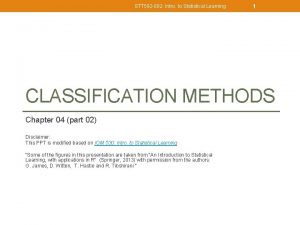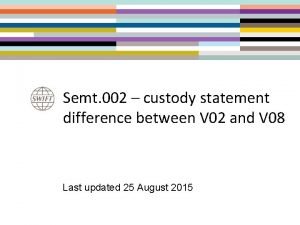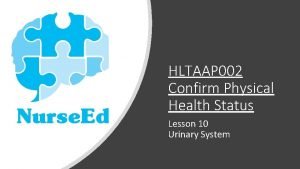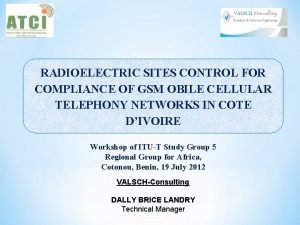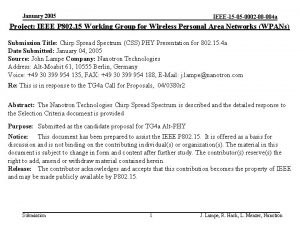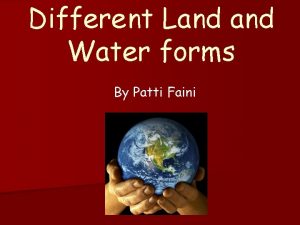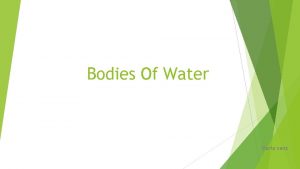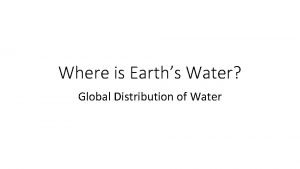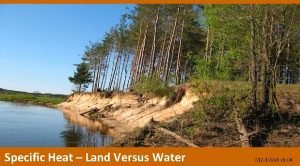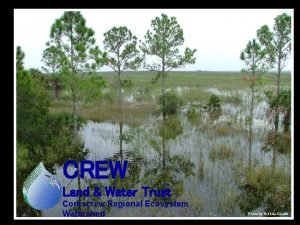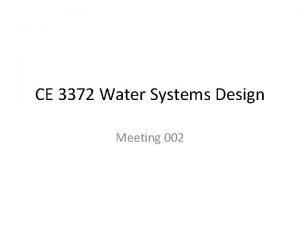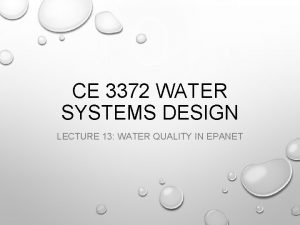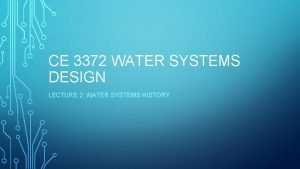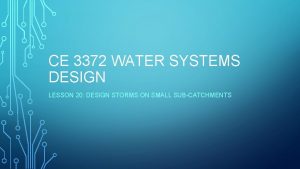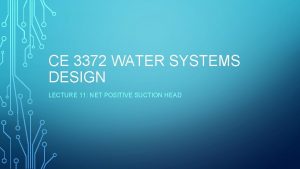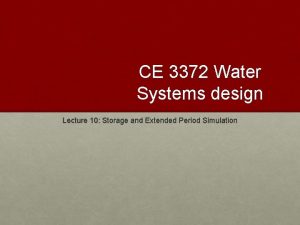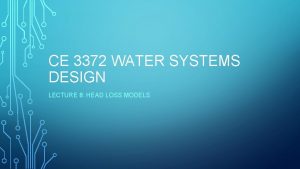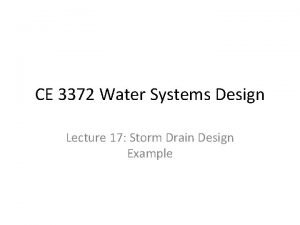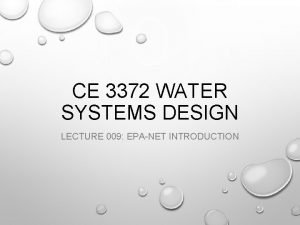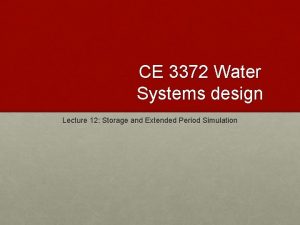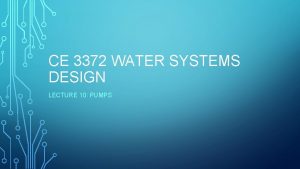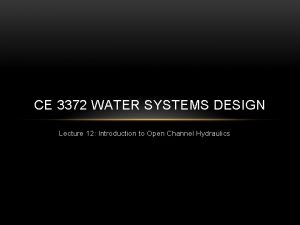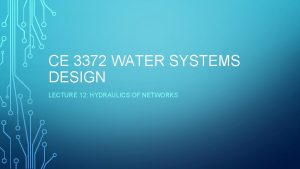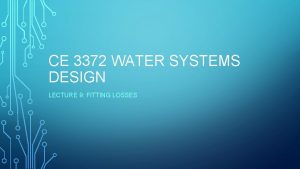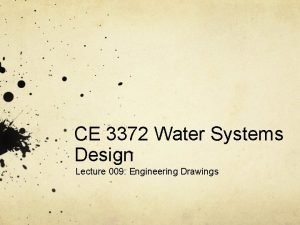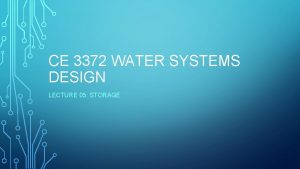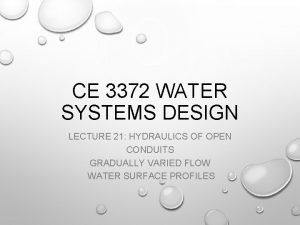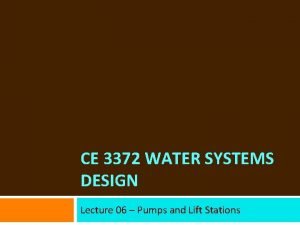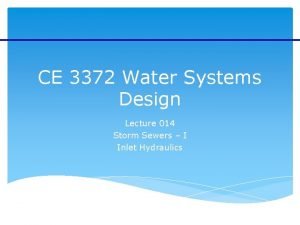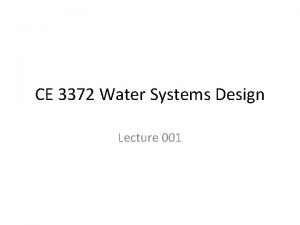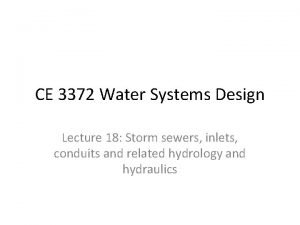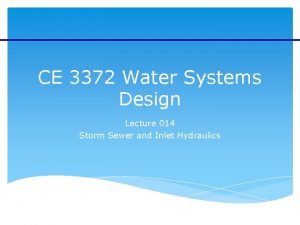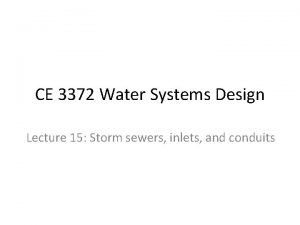CE 3372 WATER SYSTEMS DESIGN LECTURE 002 LAND















































- Slides: 47

CE 3372 WATER SYSTEMS DESIGN LECTURE 002: LAND DEVELOPMENT VOCABULARY; DESIGN MANUALS

OUTLINE • Development Vocabulary • • Municipal Utility Districts Bonds • Design Guidelines • Cost Estimation • Bidding • Basics to Land Development Process

VOCABULARY!!!!

EASEMENTS n. Easement – An easement is a permanent right authorizing a person or party to use the land or property of another for a particular purpose. n. Right of Way (ROW) – Is the actual land area acquired for a specific purpose. n Can be acquired by grants/long usage agreements. n Most common for roads/paths. (example on board). n Landowners paid a one-time payment based on fair market value for easement rights. n Landowners continue to pay property tax on ROW. n. Utility Easement - Acquires certain rights to build and maintain power lines.

LOTS AND PLATS n. A lot is a tract or parcel of land owned or meant to be owned by some owner. n. Plat – Is a scaled map that shows the divisions of a piece of land. n. Done when landowner wants to divide land into smaller parcels (homes/apts/etc. ) n. Designates roads/ROW n. Dedicates land for public uses n. Ensures compliance with zoning n. Done through Surveying – Metes and Bounds n. After plat is filed, reviewed and approved, legal descriptions can refer to block and lot-numbers.

PLAT

METES AND BOUNDS • Is a method for describing the lines which bound a parcel of real estate. • Begins at a known landmark for a place of beginning (POB), then follows a line according to the compass-needle, and traces the boundary returning to POB • Metes refers to a boundary defined by the measurement of each straight run, specified by a distance between the terminal points, with an orientation or direction. • Bounds refers to a more general boundary Condition

METES AND BOUNDS

TOPO AND KEY MAPS • Topographic map – is a type of map characterized by detailed, accurate graphic representations of features that appear on the Earth's surface showing quantitative representation of relief, using contour lines. • Features include: • • cultural: roads, buildings, urban development, railways, airports, names of places and geographic features, administrative boundaries, state and international borders, reserves hydrography: lakes, rivers, streams, swamps, coastal flats relief: mountains, valleys, slopes, depressions vegetation: wooded/cleared areas, vineyards and orchards. • Key Map – “Houston’s official atlas” • Helps clarify project location

FEMA, FIRM, BFE n. FEMA – Federal Emergency Management Agency n. Under Department of Homeland Security n. Main focus is to coordinate response to a major disaster n. FIRM – Flood Insurance Rate Map n. The official map of a community on which FEMA has delineated both the special hazard areas and the risk premium zones applicable to the community. n. BFE – Base Flood Elevation n. Is the regulatory requirement for the elevation or floodproofing of structures. The relationship between the BFE and a structure's elevation determines the flood insurance premium.

MUDS AND BONDS!

MUNICIPAL UTILITY DISTRICTS (TEXAS) • MUD - Municipal Utility District (MUD) • Is a political subdivision of the State of Texas authorized by the Texas Commission of Environmental Quality (TCEQ) to provide water, sewage, drainage and other services within the MUD boundaries. • MUDs have authority to levy taxes within the MUD boundaries (and can even tax residents who do not receive any services)

HOW TO CREATE A MUD (1) • A majority of property owners in the proposed district petitions the Texas Commission of Environmental Quality to create a MUD. • • The TCEQ evaluates the petition, holds a public hearing, and grants or denies the petition. After approval, the TCEQ appoints five temporary members to the MUD's Board of Directors, until an election is called to elect permanent Board members, to confirm the MUD's creation, and to authorize bonds and taxing authority for bond repayment.

HOW TO CREATE A MUD (2) n. Developers petition the Texas Commission of Environmental Quality to create a MUD. Developers are prohibited from serving or placing employees, business associates, or family members on the MUD Board of Directors. n. Developers must pay for or put up a letter of credit equal to 30% of the cost of subdivision utilities. This requirement ensures against "fly-by-night operators" who are not committed to the success of the MUD. n. The "30% rule" also offers protection to MUD residents in the event that a subdivision is not built according to schedule.

HOW TO CREATE A MUD (2) n. After approval, the TCEQ appoints five temporary members to the MUD's Board of Directors, until an election is called to elect permanent Board members, to confirm the MUD's creation, and to authorize bonds and taxing authority for bond repayment. n. Unless they are voting residents within a MUD, developers have no authority or control over the MUD's Board of Directors. n. This “way of making MUD” is by far the most common in Texas. Developer creates the MUD, sells properties in the district, then when build out is complete, leaves MUD behind for the residents to operate.

MUD OPERATIONS • The publically elected Board of Directors manages and controls all of the affairs of the MUD subject to the continuing supervision of the Texas Commission of Environmental Quality. • The Board establishes policies in the interest of its residents and utility customers. • A MUD may adopt and enforce all necessary charges, fees and taxes in order to provide district facilities and services.

MUD OPERATIONS • If a MUD sells bonds (borrows money), those are repaid by charges, fees, and taxes. • MUD tax rates, like all property tax rates, vary according to property values and debt requirements. MUD rates generally decline over time as the MUD is built out and operating and debt service costs are shared by more homeowners.

BONDS • A municipal bond is a bond issued by a local government, or their agencies. • Municipal bonds are securities that are issued for the purpose of financing the infrastructure needs of the issuing municipality. • These needs vary greatly but can include schools, streets and highways, bridges, hospitals, public housing, sewer, water systems, power utilities, and various public projects.

BONDS • Municipal bond holders may purchase bonds either directly from the issuer at the time of issuance (on the primary market), or from other bond holders at some time after issuance (on the secondary market). • In exchange for an upfront investment of capital, the bond holder receives payments over time composed of interest on the invested principal, and a return of the invested principal itself (see bond).

DESIGN GUIDELINES!

DESIGN • Design is the management of constraints • Non-negotiable constraints are dictated by laws of physics, chemistry (and to some extent mankind). • Negotiable constraints are the design variables that can be adjusted to satisfy the non-negotiable constraints. • Negotiable • • Money Time Aesthetics (Pipe Alignment/Channel geometry) Performance • Non-negotiable • • Physics (Water flows downhill, unless power & money are applied) Chemistry

FREQUENCY BASED DESIGN • Design to accommodate an event of some predetermined probability (return frequency). • Assume that more frequent events are also accommodated. • • You did frequency analysis in hydrology! T-year event

RISK BASED DESIGN • Design to accommodate some pre-determined expected net loss. • Expected loss is product of the probability of failure and the cost of that failure. • Design to minimize the sum of initial cost and expected loss • You did elements of risk analysis in hydrology, namely the probability portion.

CRITICAL-EVENT DESIGN • Design to accommodate largest anticipated event. • Applied for systems where consequences of failure are huge (economically and/or politically) • Large dams, nuclear power plants • Assumes the event is anticipated • Earthquake + Tsunami + Pump Failure combined were not anticipated (actually they were, just no-one paid attention!)

DESIGN MANUALS • Where do we get the guidance documents? • Texas Administrative Code • Part 1, Chapters 30 and 31 cover nearly all of what we might do as municipal water engineers • Large diameter pipelines like the Lake Allen Henry to Lubbock are outside the scope of the code and are governed by broader guidance – these kinds of projects are uncommon and likely closely follow the intent of the TAC as appropriate.

DESIGN MANUALS • Where do we get the guidance documents? • Flood Control Districts

DESIGN MANUALS • Where do we get the guidance documents? • Local Jurisdictions

DESIGN MANUALS • Where do we get the guidance documents? • Professional Organizations Not everything is free – this MOP would be vital to a practicing engineer, but he/she would have to pay for it

DESIGN MANUALS • Where do we get the guidance documents? • Professional Publications – Often these publications are eventually integrated into jurisdictional design manuals. – The example shown is the source of minimum sewer velocity criteria in the USA

DESIGN MANUALS • Where do we get the guidance documents? • Vendor/Trade Organization Publications

RESOURCES n. Design uses hydrologic and geologic data and various analysis tools n. USGS: topography, streamflow, computer programs n. NRCS: soil maps, land use, computer programs n. US EPA: rules, chemical properties, computer programs n. NCDC: rainfall, snowfall, solar radiation n. USBR: Western US water and energy supply n. USACOE: Navigable waterways, computer programs n. FHWA: design manuals, computer programs

RESOURCES • • • TWDB: Funding (for cities and water districts) • • Tx. DOT: Design manuals, some data, computer programs • Cities: Rules, design manuals TCEQ: Rules, guidelines, some data TNRIS: Evaporation estimates, digital elevation models, digital ortho-quadrant maps, false IR images, etc. County: Rules, design manuals, some operate rainfallstage networks

EXAMPLE DESIGN GUIDELINES • Design guidelines are in various manuals, and codes. • In Texas, distribution systems are covered at state level by a document called RG-195. • A copy is on the server.

DESIGN GUIDELINES • RG-195 is really a collection of applicable Texas Administrative Code rules

DESIGN GUIDELINES • RG-195 is really a collection of applicable Texas Administrative Code rules

DESIGN GUIDELINES • Design Standards; ANSI; NSF; ASTM; AWWA

DESIGN GUIDELINES • Pipe Sizes

DESIGN GUIDELINES • Pressure Requirements

DESIGN GUIDELINES • Estimating Demand (several methods)

RESOURCES • Various analysis tools • • Google FEMA River authorities Drainage districts Flood control districts Irrigation districts Council of Governments (COGs)

DATA • Most data are NOT free • • Agencies charge a fee for data, usually pretty small. • A lot of useful data are currently free, but don’t get offended if in the future you expected to pay for it. NCDC is worst offender of taking the fee, then providing the wrong data, so be sure you know what you want.

COST ESTIMATION

COST ESTIMATING n. Is the approximation of the cost of a program, project, or operation, estimated by the engineer. Includes: n. Planning and feasibility studies n. Engineering services (Design/Meetings/Reports etc. ) n. Surveying n. Construction, including materials, equipment, and labor n. Field inspection n. To manage liability: n. Some firms avoid “estimate” and use “Opinion of Probable Cost” n. Recommend adding “Preliminary” to all estimates before final cost n. A contingency is usually included in an estimate to provide for unknown costs which are indicated as likely to occur by experience, but are not identifiable. n. Cost Estimate also pre-determines how much time and money you, the engineer, need to “finish” the project.

COST ESTIMATION • A cost estimate is usually prepared to submit a bid or tender to compete for a contract award. • How to build a cost estimate? • • • Educated guessing RS Means Practice and research! (Previous awarded bids, manufacturers) • NOTE* • Preliminary cost estimates are usually rounded to the nearest thousand. Gives developers a number to secure financing. • Final cost estimates for bids are exact.

BIDS n. What is a Bid? – A bid is an offer. n. Engineers design and produce bid documents (lawyer jargon), including construction drawings and technical specifications, more commonly called “bid and specs” n. Engineering firms are required to place an advertisement in the local paper two weeks before bid day n. Upon receiving info, general contractors (if interested) will bid to construct the project. n. Bidding Facts: n Bidding can be open or closed (selected contractors). n All bids must be turned in by time selected. n Bids are opened with contractors in the selected room by a PE only AFTER selected time. n Bids MUST be read aloud. n Required Documentation and any discrepancy must be noted. n Usually lowest bid is chosen or contractor based on history/preference n Developer has the right to refuse all bids.

BASICS TO LAND DEVELOPMENT PROCESS

LAND DEVELOPMENT PROCESS n. Developer n. Engineering Firm n. Feasibility Analysis n. Preliminary Design/Report n. Final Design/Report n. Advertise n. Bid n. Construction
 Rfc 3372
Rfc 3372 Water and water and water water
Water and water and water water 01:640:244 lecture notes - lecture 15: plat, idah, farad
01:640:244 lecture notes - lecture 15: plat, idah, farad Land use planning '' lecture notes
Land use planning '' lecture notes Land economics lecture notes
Land economics lecture notes Land use planning '' lecture notes
Land use planning '' lecture notes What are landforms
What are landforms Identifying landforms
Identifying landforms Mfc-002
Mfc-002 Norsok z-001
Norsok z-001 Semt.001
Semt.001 Puneeth iyengar
Puneeth iyengar Cip 002-009
Cip 002-009 Gmas-002
Gmas-002 Site structure
Site structure 001 002 003
001 002 003 Youtube
Youtube 002
002 002
002 353156
353156 Um objeto com massa de 10kg e volume de 0 002
Um objeto com massa de 10kg e volume de 0 002 002
002 002
002 Um objeto com massa de 10kg e volume de 0 002
Um objeto com massa de 10kg e volume de 0 002 002
002 Faculty marshall usc advertising csv
Faculty marshall usc advertising csv 002
002 Semt.002
Semt.002 Hltaap002 confirm physical health status
Hltaap002 confirm physical health status Um objeto com massa de 10kg e volume de 0 002
Um objeto com massa de 10kg e volume de 0 002 Dtu p 06-002
Dtu p 06-002 0,05/0,002
0,05/0,002 001 002 003
001 002 003 Advanced operating system notes
Advanced operating system notes Lecture sound systems
Lecture sound systems Lecture sound systems
Lecture sound systems Land water and air pollution
Land water and air pollution Soil pollution images diagram
Soil pollution images diagram The land area that supplies water to a river system
The land area that supplies water to a river system This is an area of water with land all around it
This is an area of water with land all around it A high point of land extending into water
A high point of land extending into water Strip of land with water on both sides
Strip of land with water on both sides Earth land and water percentage
Earth land and water percentage Specific heat of water and land
Specific heat of water and land Corkscrew regional ecosystem watershed
Corkscrew regional ecosystem watershed Practical design to eurocode 2
Practical design to eurocode 2 Elemen urban design
Elemen urban design Elements of design in interior design ppt
Elements of design in interior design ppt
